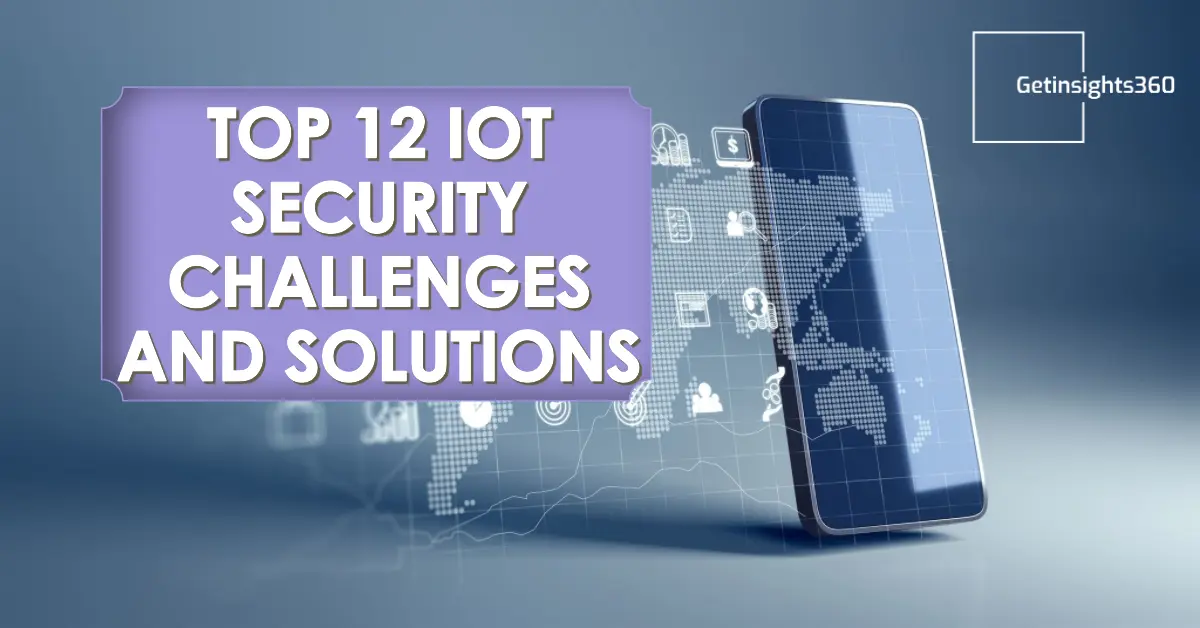
Top 12 IoT Security Challenges and Solutions
Introduction
In the rapidly evolving landscape of technology, the Internet of Things (IoT) has emerged as a game-changer, connecting devices and systems to enhance efficiency and convenience. As our world becomes more interconnected, the need for robust IoT security becomes paramount. In this blog post, we’ll delve into the top 8 IoT security challenges and explore effective solutions to ensure a secure and seamless IoT ecosystem.
Understanding IoT and Its Benefits
Before we dive into the challenges and solutions, let’s briefly understand what IoT is and the benefits it brings. IoT refers to the network of interconnected devices that communicate and share data to perform various tasks. From smart homes and wearables to industrial sensors and healthcare devices, the scope of IoT is vast.
One of the significant benefits of IoT is the unprecedented level of convenience it provides. Smart homes, for example, allow us to control lighting, temperature, and security systems remotely. In industries, IoT devices enhance efficiency by enabling predictive maintenance and real-time monitoring of equipment.
However, as the number of connected devices grows, so does the potential for security vulnerabilities. Let’s explore the top challenges and their solutions:
Data Privacy and Security
Challenge: IoT devices collect and transmit vast amounts of sensitive data, making them attractive targets for cybercriminals.
Solution: Implement robust encryption protocols to protect data both during transmission and storage. Regularly update security measures to stay ahead of new threats.
Inadequate Authentication
Challenge: Weak authentication mechanisms can lead to unauthorized access to IoT devices and systems.
Solution: Employ multi-factor authentication to ensure only authorized users can access and control IoT devices. This provides an extra layer of protection beyond traditional passwords.
Lack of Standardization
Challenge: The absence of uniform security standards across IoT devices makes it challenging to implement consistent security measures.
Solution: Advocate for industry-wide standards and guidelines to ensure that IoT devices adhere to a common set of security protocols. This promotes a more secure and interoperable IoT ecosystem.
Device Vulnerabilities
Challenge: Many IoT devices have limited processing power and memory, making them susceptible to exploitation by cyber threats.
Solution: Regularly update and patch IoT devices to address known vulnerabilities. Manufacturers should prioritize security in the design phase and provide firmware updates to enhance device resilience.
Insufficient Network Security
Challenge: Insecure communication channels between IoT devices and networks can be exploited for unauthorized access.
Solution: Employ secure network protocols such as TLS/SSL to encrypt data in transit. Implement firewalls and intrusion detection systems to monitor and block malicious activities on the network.
Poorly Managed Updates and Patches
Challenge: Irregular or nonexistent updates and patches can leave IoT devices exposed to known vulnerabilities.
Solution: Establish a systematic approach to update and patch IoT devices promptly. Provide users with clear instructions on how to apply updates to ensure a secure and up-to-date IoT environment.
Physical Security Threats
Challenge: Physical tampering or theft of IoT devices can compromise their security.
Solution: Implement physical security measures, such as tamper-evident packaging and secure installation locations. Additionally, consider incorporating features like remote device deactivation in case of theft.
Limited User Awareness
Challenge: Users may not be fully aware of the security risks associated with IoT devices, leading to unsafe practices.
Solution: Conduct educational campaigns to raise awareness about IoT security risks and best practices. Provide user-friendly guides on setting up secure configurations and regularly update users on potential threats.
Lack of Secure Supply Chain Practices
Challenge: The supply chain for IoT devices involves multiple vendors and manufacturers, increasing the risk of compromised components or firmware during production.
Solution: Implement secure supply chain practices, including thorough vetting of suppliers, ensuring the integrity of components, and conducting regular audits. Collaboration between manufacturers to establish secure supply chain standards is essential to mitigate this risk.
Insufficient Incident Response Planning
Challenge: In the event of a security breach, many organizations lack a well-defined incident response plan specific to IoT devices, leading to delays in addressing and mitigating threats.
Solution: Develop and regularly update a comprehensive incident response plan tailored to IoT security incidents. This plan should include protocols for detecting, responding to, and recovering from security breaches. Conduct regular drills to ensure readiness in handling potential incidents.
Integration Challenges with Legacy Systems
Challenge: Many organizations use legacy systems that may not be inherently compatible with modern IoT security measures, creating integration challenges.
Solution: Prioritize the integration of IoT devices with existing systems during the planning phase. Implement gateway devices and middleware to facilitate communication between legacy systems and IoT devices securely. This ensures a smooth transition without compromising overall system security.
Inadequate Regulatory Frameworks
Challenge: The evolving nature of IoT technology often outpaces the development of comprehensive regulatory frameworks, leaving gaps in addressing security requirements.
Solution: Advocate for and contribute to the development of robust and adaptive regulatory frameworks for IoT security. Engage with regulatory bodies to ensure that standards keep pace with technological advancements. Compliance with these standards should be a key consideration for manufacturers and organizations deploying IoT devices.
Conclusion
As we embrace the transformative power of IoT, addressing its security challenges becomes imperative. By prioritizing data privacy, implementing robust authentication, advocating for standardization, and addressing device vulnerabilities, we can build a more secure IoT ecosystem. Proactive network security measures, well-managed updates, and user education further contribute to fortifying the interconnected world we are creating. As we navigate the challenges, the collaborative efforts of manufacturers, policymakers, and users will play a crucial role in shaping a safer and more resilient IoT landscape. Embracing these solutions ensures that the benefits of IoT can be fully realized without compromising on security.